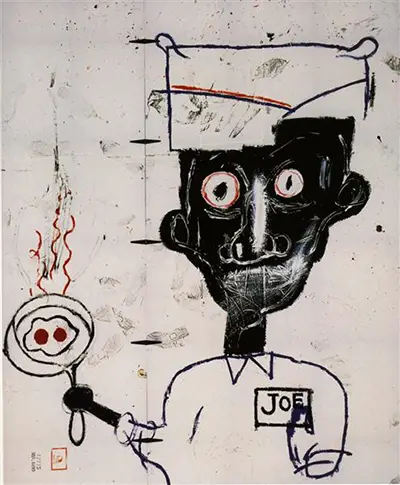The painting depicts a black man in simple clothes and with a frying pan in his right hand, with eggs cooking in the centre. There are two yolks which give the impression of eyes looking directly at us. The outfit is most likely to be prison clothing, or perhaps a chef's outfit. The rest of the artwork is left blank and so this piece is unusually crisp and concise for an artist who would often leave sprawling arrays of text and content which amazed and confused at the same time. This piece came from the early 1980s and this was very much the case then, with wild artworks in bright colour and extraordinary detail. This piece therefore feels more refined and potentially was planned carefully prior to being completed, perhaps with a number of study sketches at around the same time.
Basquiat, as we all know, was a passionate member of the Afro-Caribbean community and strived to make the lives of the less fortunate better by drawing attention to their continued struggles. He felt that they were being treated unfairly by many parts of society and hoped that he could use his own platform to push for change. All these years later things have not changed too much, and still we see similar campaigns, though it must be said that in general society has improved in many ways, albeit with still plenty of room for further progress. His work therefore feels entirely suitable today, perhaps even more so than when he produced the paintings back in the 1980s.
This piece might be amongst his more popular and accessible because of the relative simplicity of the piece and the clear message that most of us can understand without the need for the full backstory of the artist's life and career. Basquiat became one of the most significant parts of the New York School, which itself would dominate international art for several years. He therefore overcame some significant barriers to leave behind a highly influential body of work which progressed the lives of others just as he had planned. It also encouraged a greater acceptance of many modern art styles which had previously struggled to be taken seriously in comparison to the work of the great masters, for example.


